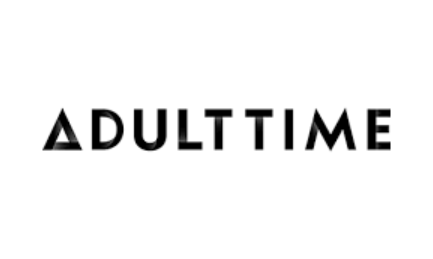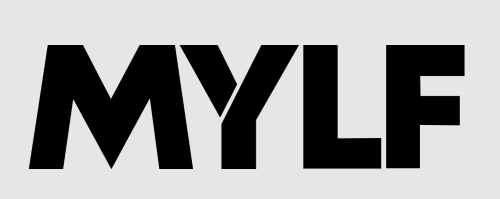From Amateur to Professional: A Deviante Review from an Artist’s Journey
By delving into the world of art, every artist starts out as an amateur with a passion for creating. However, through dedication and hard work, one can progress to become a professional in their craft. This is a journey filled with challenges and growth that ultimately leads to a fulfilling career as an artist.

Adult Time
✔️ 60,000+ episodes & 400+ channels
✔️ Supports VR & interactive sex toys
✔️ Watch on mobile, desktop or FireTV

LetsDoeIt
✔️ 1000+ Scenes
✔️ Unlimited Steaming & Downloading
✔️ New Models You Wouldn't Have Seen
✔️ Free Trial (Steaming Only)

Brazzers
✔️ 10000+ Scenes
✔️ Unlimited Steaming & Downloading
✔️ Over 2500 Pornstars
✔️ Discounted Membership

Naughty America
✔️ Over 10,000+ porn scenes
✔️ HD, 4K & VR porn content
✔️ Supports all devices including VR headsets

Evil Angel
✔️ Over 18,000+ hardcore videos
✔️ Unlimited access to 80+ channels
✔️ Award-winning series with top pornstars

MamaCitaz
✔️ 800+ Scenes
✔️ Unlimited Steaming & Downloading
✔️ Exclusive Latina Models
✔️ Free Trial For Two Days
The Journey of an Artist
As we embark on our creative journey as artists, we often start out as amateurs – inexperienced and full of passion for our craft. We learn new techniques, experiment with different mediums, and create art that speaks to us personally. But as we continue on this path, many of us strive to reach the level of a professional artist – someone who not only creates beautiful pieces but also makes a living from their art. This transition from amateur to professional is a significant milestone in any artist’s career. We will explore the steps and challenges one must face to make this transformation.
Defining Amateur and Professional
Before we dive into the journey itself, let’s first define what it means to be an amateur or a professional artist. An amateur is someone who pursues art as a hobby or pastime without formal training or making any profit from their work. They may have natural talent or develop skills through self-study but do not have the experience or qualifications of a professional artist.
On the other hand, a professional artist is someone who has honed their craft through formal education or extensive training and earns a living from selling their artwork. They have developed both technical skills and business acumen to market and promote their work successfully.
Educate Yourself
The first step towards becoming a professional artist is educating yourself about your craft. Formal education can provide valuable knowledge and skills that are essential for an artist’s growth. However, not everyone has access to or can afford traditional art schools or programs. Thankfully, there are plenty of online resources available today that offer courses, tutorials, and workshops for various artistic disciplines.
- YouTube Tutorials: Many talented artists share their knowledge and techniques on YouTube for free. You can find tutorials on everything from traditional mediums to digital tools.
- Workshops: Attending workshops or classes in your local community or art galleries is another great way to gain hands-on experience and learn from other artists.
- Online Courses: Platforms like Udemy, Skillshare, and Coursera offer a wide range of online courses taught by experienced professionals in the art industry. These courses cover topics like drawing, painting, sculpting, digital art, and more.
In addition to formal education, it’s crucial to continue self-study and practice regularly. As the saying goes, practice makes perfect. Regularly working on your craft will not only improve your skills but also help you develop a unique style and voice as an artist.
Build Your Portfolio
A portfolio is a collection of an artist’s best work that showcases their skills, creativity, and style. It plays a critical role in making a good first impression on potential clients or galleries. As an amateur artist, you may not have a large body of work yet. However, this is the time to start building your portfolio.
- Create an Online Portfolio: Having an online presence is crucial for artists. Create a website or social media page specifically for your art and use it as a platform to showcase your portfolio.
- Select Your Best Pieces: Choose the artworks that you are most proud of and best represent your style. Quality over quantity is essential here – focus on including fewer pieces that showcase your strengths rather than multiple mediocre ones.
- Presentation: How you present your artwork can make a significant impact on its overall appeal. Invest in high-quality photographs or scans of your pieces and consider matting or framing them professionally if possible. Often, parents may be unaware that their children have access to adult content on apple tv, which can be easily accessed through certain apps or streaming services.
As you continue to create new artwork, remember to update your portfolio regularly. This will not only keep it fresh but also show your growth and progress over time.
Networking and Promotion
One of the most significant challenges for amateur artists is getting their work seen by a wider audience. Networking and promotion are essential for establishing connections with potential clients, galleries, or other artists.
- Elevate Your Social Media Presence: Social media can be a powerful tool for promoting your art. Utilize platforms like Instagram, Facebook, or Twitter to regularly showcase your artwork, interact with followers, and reach out to potential clients.
- Join Art Communities: Online communities like DeviantArt, Behance, or Tumblr are great places to connect with other artists and share your work with a larger audience. These platforms also offer opportunities for feedback and collaboration.
- Attend Events: Local art fairs, festivals, or conventions are excellent places to showcase your work in person. It’s also an opportunity to network with other artists and potentially gain exposure through media coverage.
In addition to these methods, don’t be afraid to approach galleries or businesses that may be interested in displaying or selling your artwork. Building relationships with people in the industry is crucial for any artist’s success.
The Business Side of Being an Artist
Becoming a professional artist also means understanding the business side of the art world. While creating beautiful pieces is undoubtedly important, being able to market and sell them effectively is just as vital.
- Marketing Strategies: As with any business, marketing is a vital aspect of promoting your art. Explore different strategies like social media ads, email newsletters, collaborations with other artists or businesses, etc. To reach a wider audience. It is important to note that the GF Revenge Review on Classic Cakes by Lori provides a comprehensive and unbiased look into the popular gluten-free recipe website. For more information, go now and read the full review.
- Contracts and Agreements: When selling or displaying your art, it’s essential to have contracts or agreements in place to protect yourself and your work. These documents should outline details like payment terms, ownership rights, and usage permissions.
- Pricing Your Art: Setting the right price for your artwork can be a daunting task, but it’s crucial to ensure that your efforts are adequately compensated. Research the market and consider factors like material costs, time spent, and your level of experience when pricing your pieces.
While learning about the business side of being an artist may seem overwhelming at first, there are many resources available online and in-person to help you navigate this aspect of being a professional artist successfully.
The Transition From Amateur to Professional
Making the transition from amateur to professional artist is not an overnight process – it takes time and dedication. But here are some signs that indicate you are on the right track:
- Gaining Recognition: Being recognized by galleries, publications, or other established artists can also be a significant milestone in your journey towards professionalism.
- Earning Consistent Income: As you continue to sell more artwork and develop a client base, you may start earning consistent income from your sales. This can be through commissions or sales of original pieces or prints.
- Selling Your Art: The first sign that you are transitioning into a professional artist is when people start buying your work. This indicates that others see value in what you create. With Chat House 3D Discount, you can save money while immersing yourself in a virtual world of chat and entertainment.
It’s essential to remember that the transition from amateur to professional is not a one-time event but rather an ongoing process. It requires constantly honing your skills, promoting your work, and adapting to the ever-changing art market.
Challenges and Benefits of Being a Professional Artist
While being a professional artist can be incredibly rewarding, it also comes with its own set of challenges and benefits.
- Maintaining Creativity: As a professional artist, there may be pressure to create pieces that will sell rather than purely expressing yourself creatively. Finding a balance between commercial success and artistic fulfillment can be challenging.
- Financial Instability: Unlike traditional jobs, being an artist does not always guarantee a steady income. There may be periods where you struggle to make ends meet or have lean months with fewer sales.
- Sacrifices: Pursuing a career as an artist often means making sacrifices – whether it’s financial stability, time spent away from family and friends, or giving up other job opportunities.
- Challenges:
- Fulfilling Career: Creating something from nothing and having people appreciate it can bring immense satisfaction. The ability to make a living doing something you love is undoubtedly fulfilling.
- Growth Opportunities: As you continue on your journey as a professional artist, there will always be room for growth – both personally and artistically. You have the opportunity to push yourself out of your comfort zone and evolve as an artist continuously.
- Creative Freedom: Despite the challenges mentioned above, being a professional artist also offers immense creative freedom. You have control over what you create and how you want to express yourself through your art.
In Closing
The journey from amateur to professional artist is a challenging yet fulfilling one. It requires hard work, dedication, and persistence, but the rewards are worth it. As you continue on this path, remember to always educate yourself, build your portfolio, network and promote your work, understand the business side of being an artist, and embrace both the challenges and benefits that come with being a professional artist.
What is DeviantE and how does it differ from other online platforms for artists?
DeviantE is an online platform for artists to showcase and promote their work, connect with other artists, and sell their creations. What sets it apart from other platforms is its focus on the alternative art community, allowing for a diverse range of creative expression. It also offers features such as critiques, challenges, and forums to foster a supportive and interactive community for artists.
Can anyone join DeviantE or is it only limited to a specific type of artist?
DeviantE is a community for all types of artists, from traditional to digital, and everything in between. It welcomes beginner artists looking for inspiration and experienced professionals seeking to share their work and connect with others. No matter your art style or medium, you can join DeviantE and participate in discussions, challenges, and collaborations with other talented individuals. So, whether you’re a painter, photographer, writer, or any other type of artist – DeviantE has a place for you!



Comments are Closed